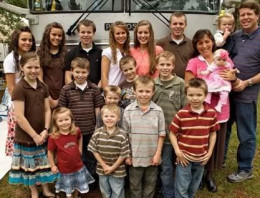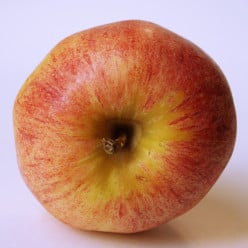How many children would the average woman have in her lifetime if she did not us
How many children would the average woman have in her lifetime if she did not use birth control?
Assuming she was conceiving naturally. What do you think?I think you just have to look at the Duggards from that 19 (or is it 20) Kids and Counting show
 )
)Wow 19 is sure a lot of children! She must be constantly pregnant.
I like the comment from mommygonebonkers. The duggards defiantly have a lot of children. although If a woman never took birth control she could have no children at all because it could be that she can't have children. This use to be very rare cases but not so much anymore.
Great point. Some women would not be able to have any children for various reasons.
History shows that the average family size was 7 children before birth control was invented (based on statistics from 1800-1990). However, that does mean that if you choose not to use birth control, you will have that many children. Natural Family Planning couples, for example, have 3 children on average, with 18% having 4 children.
Also, women did not use to have children spaced so close together before the use of formula. Breastfeeding, specifically ecological breastfeeding, has been proven to space pregnancies effectively, the average length of infertility after birth being 14.6 months.
Natural family planning allows women to identify her fertile days each month, allowing couples to avoid intercourse if they do not wish to have a child. It is not birth control. It is over 98% effective, based 100% on science and a completely safe and moral alternative to birth control.
Even couples in 3rd world countries can practice NFP to avoid pregnancy. It is completely free and requires no electricity. If tomorrow our whole society collapsed, women could still effectively space and limit their family size.
I have written several articles on NFP and ecological breastfeeding if you are interesting in learning more.
Michelle Duggar & other megamoms are examples of how many children women would have if they did not use birth control. However, if the average woman did not use birth control, the number of children could vary depending upon the woman's level of fertility. Some women would have 0-4 children, most women would have on the average 7 children, & a few would have upwards of ten to the twenties.Hi dear. Maybe I can help you with some information. it’s recommended that women wait 2-4 weeks after giving birth to have sex again. Plus, ovulation would need to start again. If a woman is breastfeeding - she may not ovulate for weeks, months…or until she stops nursing totally. I still wasn’t ovulating for 2 months after I stopped nursing my daughter (when she was 11 mos. old). But my friend’s mom said that approximately 6 weeks after the birth of the baby…her cycle started right back up again & she typically nursed her children for about 18 months. She had 7 kids. And if a birth was complicated & needed a c-section the recovery time is longer. AND, if a woman has a c-section, it’s likely a doctor would recommend c-sections for the following birth. I think there are too many variables to accurately guess this. But I got some help groom all pregnancy related issues when I met my long time friend, a gynecologist in Ukraine whose tips helped me in magical ways during pregnancy.
For most of human history, the average lifetime fertility rate was 6-8 children to keep the population stable. Yes, 2/3 of children died before growing up for most of human history, while some lived to adulthood only to die in the fighting. That's why you have twice as many female ancestors as male ones.
Women who had far more children didn't have many more children survive due to her and their weakened health and hunger. That is why a Scottish woman in the late 1700s with 12 children averaged 3.5 children growing up while a woman with 8 had 3 grow up. The odds of survival for those "extra" children was nearly nil. But most women couldn't have that many children, and it wasn't just due to death in childbirth being a risk for every birth.
Disease and malnutrition limited the fertility of some, while untreatable sexually transmitted diseases impaired the fertility of others.
The population boom that started in the late 1800s was the result of better sanitation and nutrition from improving transportation networks. Now women could have 8-12 children and half grew up. Hence the population doubled for two generations before the Baby Boomers even showed up.
If we returned to those horrible, hungry, sickening (literally) times, women would have to have 7 children on average to keep the population stable. If we returned to the 1800s, it would be more like 4.Hi dear. I felt your question very interesting and I will try to give the answer best I can. I would’ve thought that in most cases there would be a point where the woman’s “lifetime” would be in an inverse relationship to the number of children she gave birth too. In so far as the stress on her body would mean that after a certain number of births she would see her life expectancy decline as she continued to get pregnant. The other factor that you haven’t taken into consideration is that Mother Nature has her own ways of spacing out births. For example, one’s chances of getting pregnant are considerably lower if one is breast feeding a baby. It’s not perfect, which is why people who definitely want to space their kids out need to take further precautions, but it’s pretty effective. I’ve read that in non-nomadic societies, children tend to be about two years apart on average, but in nomadic societies, it’s more like four years. I may not have those averages exactly right, but I believe I’m pretty close. Also, women whose bodies are under stress are less likely to become pregnant as well. I would think to care for, say, 10 or 12 kids is at least as stressful as anything else. What you really need, I think, is some kind of historical data on how many children women tend or tended to have in societies that used no form of birth control and in which having lots of babies was encouraged. But it can be frustrating to try to solve these intimate little puzzles from history because even if the society was one that had a form of writing, that doesn’t mean there are any records that, can answer this question. I hope my answer helps.
Related Discussions
- 143
Should we put a cap on how many children per family is allowed?
by Philip Cooper 4 years ago
Should we put a cap on how many children per family is allowed?This could be decided by earnings, or perhaps religion political views maybe.
- 176
What do you think of woman with more than 8 children?
by Money Fairy 9 years ago
Do you think a woman with more than 8 children has a mental problem?Isn't it just a little insane to have so many children? Unless you are a gazillionaire how on earth could you afford so many children? And how much time would you really have to spend with them ?Just curious if anyone else thinks...
- 156
What causes parents to knowingly have large/very large families
by Grace Marguerite Williams 9 years ago
(6 or more children per household) in the postmodern, 21st century United States, being fully cognizant of the fact that they will be subjecting their children to an extremely rudimentary and primitive socioeconomic living standard, even socioeconomic penury and poverty? Countless studies...
- 74
Do you think abortion should be banned by 2012?
by LailaK 12 years ago
The 2012 presidential election is approaching! Do you think that the new presidential candidates should support or ban abortion for women of all ages? Why?
- 33
Have We made Progress on Women's Rights?
by ga anderson 9 years ago
Prompted by a CNN "The Sixties" segment,I admit I was unaware...That in the 60s women made 59 cents for the same work a man was paid a dollar.That access to birth control. was generally illegal - a long process and a compassionate doctor were necessary to get it - and then only for...
- 28
Is there ever ta time when abortion is acceptable?
by Patricia Scott 10 years ago
Is there ever ta time when abortion is acceptable?I thought I knew my answer to this question until I googled the word abortion and clicked images. Now....not so much.












